 Where is the next generation of therapeutic innovations going to come from? Population-level genomic studies? The fitness trackers on everyone’s wrist? Mining electronic medical records? People’s tweets, Yelps and Facebook posts?
Where is the next generation of therapeutic innovations going to come from? Population-level genomic studies? The fitness trackers on everyone’s wrist? Mining electronic medical records? People’s tweets, Yelps and Facebook posts?
How about all of the above?
What all of these things have in common is data. Lots of it. Some of it represents kinds of data that didn’t exist 5 or 10 years ago, but all of it is slowly beginning to fuel the pharma sector’s efforts to create the next blockbuster drug or targeted therapeutic.
At least, it should be. Full story »

(gegenart/Shutterstock)
A mouse surrounded by computer screens turns its head when it notices lines moving across one of them, as a camera captures this evidence of visual acuity. A chamber similarly equipped with video cameras tests social interaction between mice. A small swimming pool, with shapes on its walls as navigational cues, lets scientists gauge a mouse’s spatial memory. A pint-sized treadmill, with a tiny camera to watch foot placement, measures gait.
Here in the Neurobehavioral Developmental Core at Boston Children’s Hospital, managed by Nick Andrews, PhD, the well-tended mice also have opportunities to play: “If you have a happy mouse,” says Andrews, “researchers get better, more consistent results.” Full story »
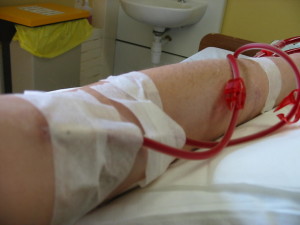
Understanding the genetic causes of nephrotic syndrome could lead to better drug treatments that reduce the need for dialysis or a kidney transplant. (Image: Wikimedia Commons)
Nephrotic syndrome is one of the worst diseases a child can have. It strikes the filtering units of the kidney, structures known as glomeruli. There’s no good treatment: Steroids are the main therapy used, but 20 percent of cases are steroid-resistant. In the syndrome’s most severe form,
focal segmental glomerulosclerosis (FSGS), children are forced onto chronic dialysis and often require a kidney transplant—often only to have their disease recur in the new organ.
Until recently, no one knew what caused nephrotic syndrome; the first causative gene was identified just a dozen years ago. The lab of Friedhelm Hildebrandt, MD, PhD, at Boston Children’s Hospital is one of a handful that’s been chipping away at the others.
Hildebrandt receives, on average, one blood sample a day from patients all over the world. Full story »
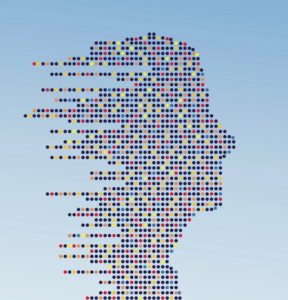
New methods can find mutations that strike just 1 in 10 cells in a sample.
It’s become clear that our DNA is far from identical from cell to cell and that disease-causing mutations can happen in some of our cells and not others,
arising at some point after we’re conceived. These so-called somatic mutations—affecting just a percentage of cells—are subtle and easy to overlook, even with next-generation genomic sequencing. And they could be more important in neurologic and psychiatric disorders than we thought.
“There are two kinds of somatic mutations that get missed,” says Christopher Walsh, MD, PhD, chief of Genetics and Genomics at Boston Children’s Hospital. “One is mutations that are limited to specific tissues: If we do a blood test, but the mutation is only in the brain, we won’t find it. Other mutations may be in all tissues but in only a fraction of the cells—a mosaic pattern. These could be detectable through a blood test in the clinic but aren’t common enough to be easily detectable.”
That’s where deep sequencing comes in. Reporting last month in The New England Journal of Medicine, Walsh and postdoctoral fellow Saumya Jamuar, MD, used the technique in 158 patients with brain malformations of unknown genetic cause, some from Walsh’s clinic, who had symptoms such as seizures, intellectual disability and speech and language impairments. Full story »
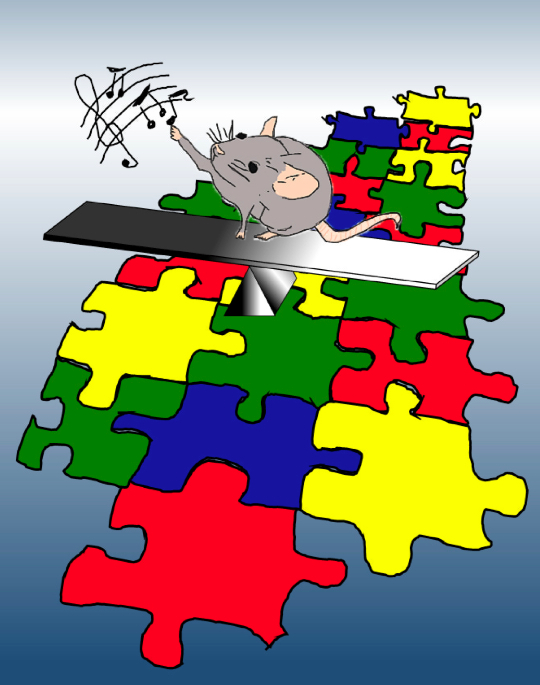
A mouse study explores how sound and touch information come together in the autistic brain (Image courtesy Nadine Gogolla)
Families of children with autism spectrum disorder have long noted sensory processing difficulties such as heightened sensitivity to noise, touch or smell—or even specific foods or clothing textures—earning sensory processing a place in the
official DSM-5 description of the disorder.
“A high proportion of kids with autism spectrum disorder will have difficulty tolerating certain kinds of sensory inputs,” says Carolyn Bridgemohan, MD, co-director of the Autism Spectrum Center at Boston Children’s Hospital. Others, she adds, are less sensitive to certain stimuli, showing a higher tolerance for pain or excessively hot or cold temperatures.
A study published last week in Neuron uses mouse models to shed new light on the brain mechanisms that underlie sensory processing abnormalities in autism. Full story »
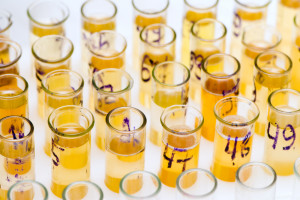
A good biomarker is one whose levels go up or down as a patient’s disease worsens or wanes. A great biomarker also gives key insights into disease development. A really great biomarker does both of these things and also serves as a treatment target.
With a protein called netrin-1, Edward Smith, MD, and Michael Klagsbrun, PhD, seem to have hit the trifecta. In a recent paper in Cancer Research, they report a clear relationship between urine netrin levels and medulloblastoma, the most common malignant brain tumor of children.
And show that netrin fuels the tumor’s invasion into healthy brain tissue.
And that blocking netrin may, at least in the laboratory, check the tumor’s spread. Full story »

Emmie Mendes was lucky enough to be diagnosed before age 3, but many families face a much longer journey.
At first, Corrie and Adam Mendes thought their daughter Emmie had an inner ear problem. She was late with several early milestones, including walking, and when she did walk, she often lost her balance. The family pediatrician sent them to a neurologist, who ordered a brain MRI and diagnosed her with pachygyria, a rare condition in which the brain is smoother than normal, lacking its usual number of folds.
Additionally, Emmie’s ventricles, the fluid-filled cushions around the brain, looked enlarged, so the neurologist recommended brain surgery to install a shunt to drain off fluid. He advised Corrie and Adam that Emmie’s life expectancy would be greatly reduced.
As Corrie recounts on her blog, Emmie’s Story, she went online and came across the research laboratory of Christopher Walsh, MD, PhD, at Boston Children’s Hospital. The lab does research on brain malformations and has an affiliated Brain Development and Genetics Clinic that can provide medical care.
After Walsh’s team reviewed Emmie’s MRI scan, genetic counselor Brenda Barry invited the family up from Florida. Full story »
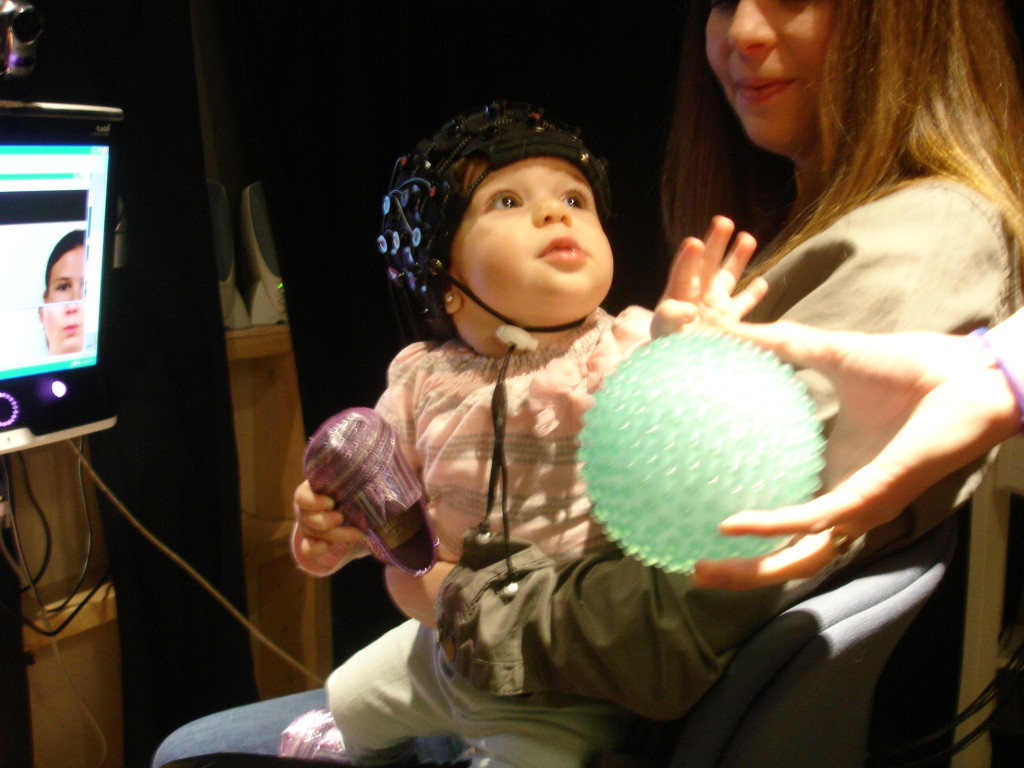 Is 9-month-old Mila Goshgarian at risk for developing autism spectrum disorder (ASD)? Her 4-year-old twin brothers are both on the spectrum, so statistically her chances are at least 20 percent.
Is 9-month-old Mila Goshgarian at risk for developing autism spectrum disorder (ASD)? Her 4-year-old twin brothers are both on the spectrum, so statistically her chances are at least 20 percent.
Her mother, Tonia, brought her into Boston Children’s Hospital for the Infant Sibling Project, which works with babies who are at increased risk of developing ASD in hopes of discovering early brain biomarkers for the disorder. This is Mila’s fifth visit; she’s been coming to the Labs of Cognitive Neuroscience for testing since the age of 3 months. Full story »
Last week, Boston Children’s Hospital’s Innovation Acceleration Program hosted a jam-packed Innovators’ Showcase where teams from around the hospital networked, traded ideas and showed off their projects. Here are a few Vector thinks are worth watching.
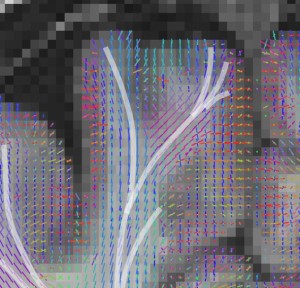 1. An imaging ‘biomarker’ after concussion
1. An imaging ‘biomarker’ after concussion
Thirty percent of people who suffer a mild traumatic brain injury—a.k.a. concussion—have ongoing symptoms that can last months or years. If patients at risk could be identified, they could receive early interventions such as brain cooling and anti-seizure medications. New MRI protocols that can measure free, non-directional diffusion of water, coupled with sophisticated analytics, are achieving unprecedented pictures of what happens inside the brain after injury. Full story »
 Where is the next generation of therapeutic innovations going to come from? Population-level genomic studies? The fitness trackers on everyone’s wrist? Mining electronic medical records? People’s tweets, Yelps and Facebook posts?
Where is the next generation of therapeutic innovations going to come from? Population-level genomic studies? The fitness trackers on everyone’s wrist? Mining electronic medical records? People’s tweets, Yelps and Facebook posts?















